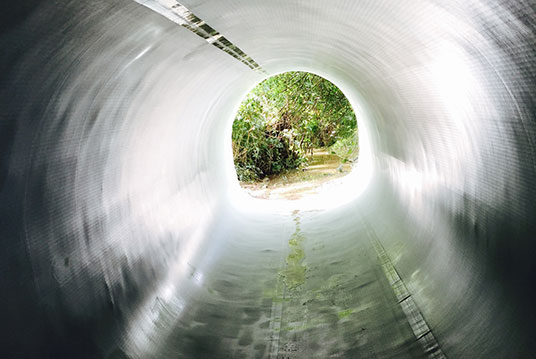A new technical guide has been created to explain best practice in the use of no-dig sewer and drain lining.
The guide, from drainage specialist Lanes Group, also explains the pros and cons of the main lining techniques available to construction and maintenance contractors.
Lanes Sewer Rehabilitation and Lining Manager Simon Bull said: “Pipe lining is a highly sustainable way to extend the life of defective sewers by up to 100 years.
“It is safer, faster, less disruptive and more cost-effective than the conventional alternative, which is to excavate a pipe and replace it. In some cases, it is the only way a pipe can reasonably be rehabilitated.
“However, there are still many asset owners who turn to traditional dig-ups first. This guide aims to show them that it makes sense now to consider lining as a first option for pipe rehabilitation.
“It also shares our expertise in showing the benefits of different lining technologies, to help asset owners make informed judgements about how their pipes can best be rehabilitated.
“Our whole team has helped put this guide together, providing answers to the most frequent questions we get about lining sewers and drains, so anyone needing this type of service get an accurate perspective on what can be achieved.”
Lining technology has advanced significantly in the last decade, with new techniques available to support specialist lining projects, including chemical effluent systems, large diameter pipes and complex pipe systems.
This includes the development of associated technologies, including robotic milling systems for preparing pipes for lining and opening lateral connections once liners are installed.
The guide explains the principles behind cured in place pipe (CIPP) installation, and the three main techniques available – ultraviolet (UV) light CIPP, hot water CIPP, and ambient CIPP.
All three techniques involve the insertion of a liner – made from felt or flexible glass reinforced plastic. A resin, or chemical catalyst, impregnated in the liner is then cured to create a tough, waterproof pipe-within-a-pipe.
Lanes is a UK leader in pipe lining. At the end of 2018, it invested £1m in three new UV CIPP lining systems, including one mounted on a bespoke pod for rehabilitating pipes and culverts along railways and in off-road locations.

The company has been among the first to use lining to strengthen highway drains as part of smart motorway modernisation programme, and to use UV lining to rehabilitate industrial pipes that need chemical resistance.
The guide – Lanes Best Practice: relining – is the latest in a series of guides about drainage issues published by Lanes.
Other topics include surface water flooding, drainage for logistics and distribution centres, drainage in hospitals and healthcare environments, septic tanks, and disposal of fats, oils and grease.
Lanes Best Practice: relining can be viewed here:
All other guides in the series can be viewed here:
Lanes Group: www.lanesfordrains.co.uk


